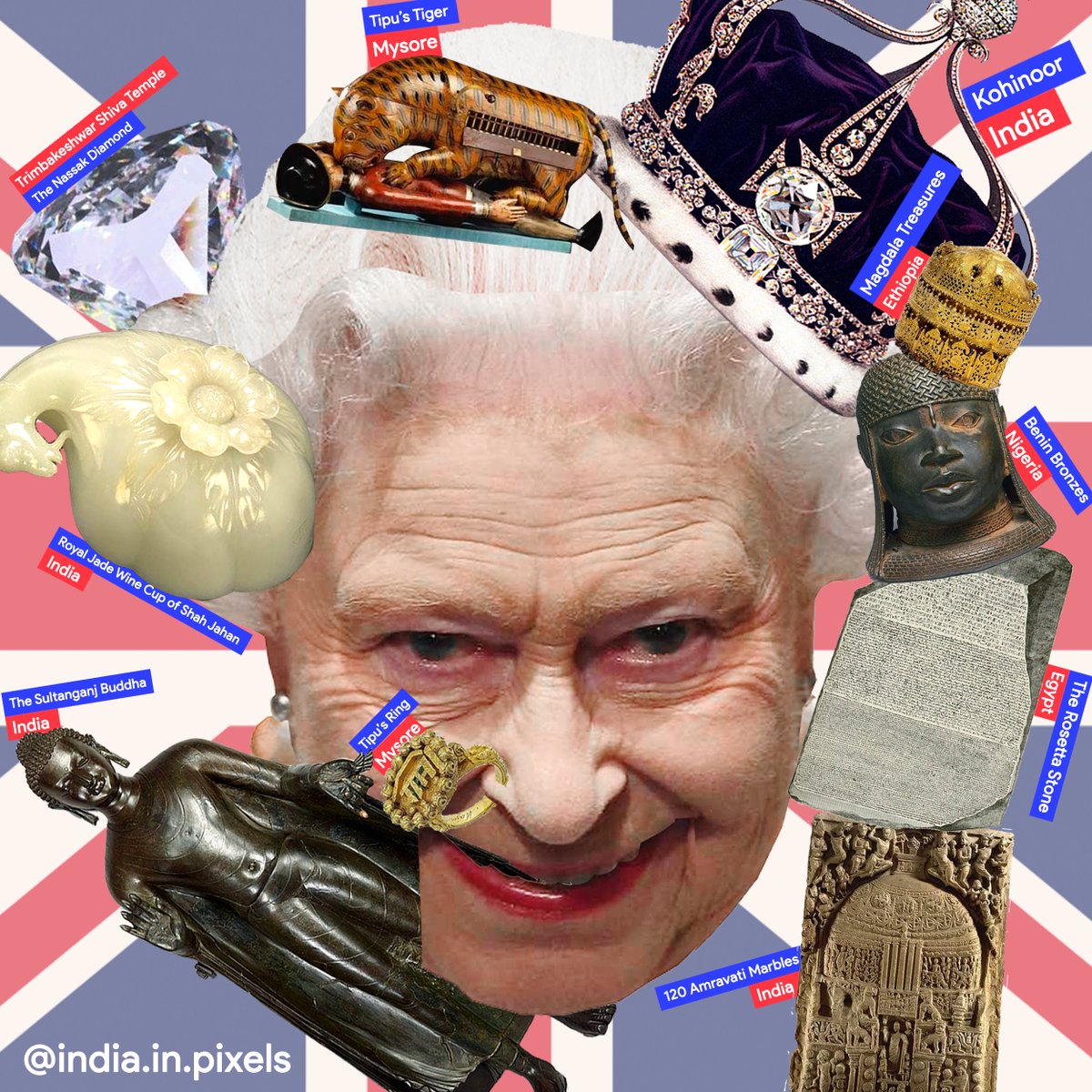
1. The Kohinoor Diamond
Brings bad luck upon any man who wears it, it has only been worn by female members of the British royal family. Mined from the Kollur Mine, the diamond is claimed by over four countries, including the Taliban.
Brings bad luck upon any man who wears it, it has only been worn by female members of the British royal family. Mined from the Kollur Mine, the diamond is claimed by over four countries, including the Taliban.
2. After the last king of Mysore died fighting the British, they took away the ring and sword of Tipu Sultan.
Though the sword eventually returned to India in 2004 after Vijay Mallya bought it at an auction for Rs 1.57 crore, his ring still remains in the UK.
Though the sword eventually returned to India in 2004 after Vijay Mallya bought it at an auction for Rs 1.57 crore, his ring still remains in the UK.
3. Over 2m tall and weighing over 500kg, the Sultanganj Buddha is the largest Indian metal sculpture. It is a testimony to the unbelievable talents that Indian sculptors possessed. After being buried for 700 years, it was discovered by E.B.Harris, a railway engineer in 1862.
4. The Amravati railings are a stunning collection of 120 sculptures and inscriptions made of limestone carvings dating from around 100 AD. It is now kept in British Museum, London after it was excavated by the British from Madras in 1859.
5. Tipu's Tiger
A life-sized, wooden tiger mauling a Caucasian figure in European clothes.
What is interesting is that hidden inside the tiger is an organ, and when a handle on the side is turned, the organ can be played which causes the dying man to wail and his arm to lift.
A life-sized, wooden tiger mauling a Caucasian figure in European clothes.
What is interesting is that hidden inside the tiger is an organ, and when a handle on the side is turned, the organ can be played which causes the dying man to wail and his arm to lift.
6. The Nassak Diamond was located in Trimbakeshwar temple of Lord Siva for more than 92 years. It was originally extracted from Amaragiri mines (currently in Mahabubnagar district, Telangana, India) during the late 15th century. Peshwa Bajirao-2 gave it to East India Company.
7. The royal Jade wine cup was made in 1657 for Mughal emperor Shah Jahan with inspirations from China, Iran, Europe, and India.
It is one of the most exquisite surviving objects from the Mughal dynasty, reports the official website of Victoria and Albert Museum, London.
It is one of the most exquisite surviving objects from the Mughal dynasty, reports the official website of Victoria and Albert Museum, London.
8. Stolen by British forces from the Kingdom of Benin in what is modern-day Nigeria, the Benin Bronzes are a collection of (mostly brass) plaques made between the 13th and 18th centuries.
9. After the battle of Magdala in 1868, the British stole thousands of priceless items important to the Ethiopian Empire from the city of Magdala. So much was stolen that it took 15 elephants and hundreds of mules to transport the goods to a nearby town for auction.
10. The Rosetta Stone
The Rosetta Stone is a stone inscribed with three versions of a decree issued in Egypt in 196 BC. The top and middle texts are in Egyptian, while the bottom is in Ancient Greek. When the British defeated the French they took the stone to London.
The Rosetta Stone is a stone inscribed with three versions of a decree issued in Egypt in 196 BC. The top and middle texts are in Egyptian, while the bottom is in Ancient Greek. When the British defeated the French they took the stone to London.
• • •
Missing some Tweet in this thread? You can try to
force a refresh













